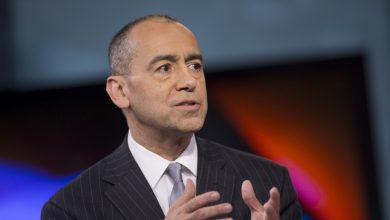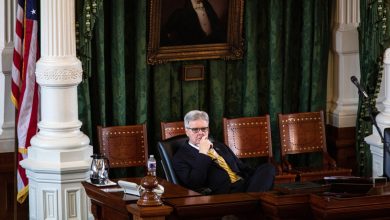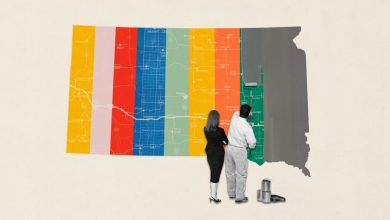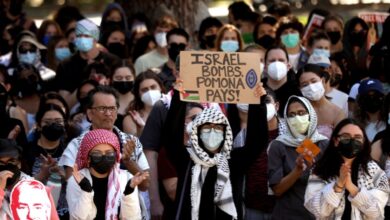After 2-Month Strike, Columbia U. and Student Workers Reach Tentative Agreement
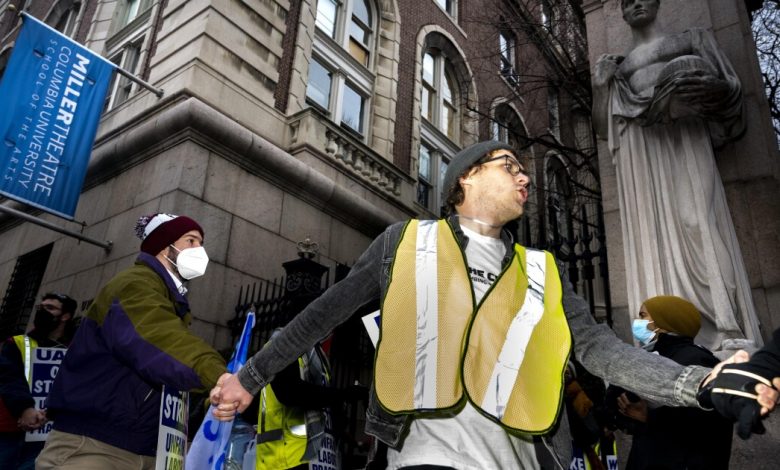
Student workers at Columbia University voted on Friday to end their 10-week strike, after union organizers struck a tentative agreement with university administrators late Thursday. The strike, which began on November 3, was the largest active strike in the United States at the time it ended.
The union’s 3,000 members — including graduate and undergraduate students, research assistants, and graduate instructors of record — called for higher wages, more robust health coverage, and the right to third-party arbitration of harassment and discrimination complaints. The size of the strike meant that hundreds of undergraduate classes were canceled for lack of a graduate instructor.
“There is no doubt that this has been a challenging period for the university, yet all who were involved in collective bargaining shared the common goal of creating a stronger Columbia for those who teach and learn, conduct research, discover and innovate, work and study here,” Mary C. Boyce, the provost, said in a message to the campus on Friday. “We are proud of this agreement, which would make Columbia a leader in higher education on a long list of issues affecting student employees.”
The tentative agreement, according to a summary posted on Columbia’s website, would last four years, retroactive to August 1, 2021, and include an immediate raise of at least $3,000 for all doctoral students on appointments, and a 16-percent pay increase over four years for doctoral students on 12-month appointments. Stipends would increase by 3 percent each year.
The new agreement, if ratified by the union’s members, would also provide dental benefits for doctoral students and their dependents, and create support funds to aid students with out-of-pocket medical expenses. Student workers would, under the agreement, be able to pursue harassment and discrimination complaints through neutral third-party arbitrators after investigation by Columbia’s Equal Opportunity and Affirmative Action Office. Any student worker who performs instructional or research work at Columbia, as defined by a 2017 decision by the National Labor Relations Board, would be recognized as a union member.
“We are thrilled to reach an agreement with Columbia after seven years of building toward this first contract,” said Nadeem Mansour, a member of the bargaining committee and a doctoral candidate in the department of Middle Eastern, South Asian, and African studies, in a news release. “What our members achieved is impressive, but this is only the start. We look forward to building on our strong union culture to ensure the university continues to meet the needs of student workers.”
The union — Student Workers of Columbia, affiliated with the United Auto Workers — will now enter a 15-day discussion period, followed by a weeklong ratification period, as provided in its bylaws. Results will be announced on January 28, at the end of the ratification period. “Union organizers note that members are ready to reject the tentative agreement or return to strike if the university does not offer sufficient compensation for make-up work for all striking members,” the bargaining unit wrote in its release.
Back pay for striking workers had been a sticking point for both sides in the final days of negotiations, with bargaining sessions breaking down over the issue earlier in the week. Pay for make-up work will be disbursed through individual departments, one organizer wrote on Twitter.
Students gathered for in-person and online picketing throughout the strike, including demonstrations that blocked campus entrances. Those actions escalated when Columbia administrators told workers, in a memo in early December, that only those who ceased striking would receive appointments for the spring. (Those who didn’t stop striking by December 10, the message said, would receive spring appointments only “if available.”) Many saw the memo as a threat to replace striking students with scab employees, and claimed that such a move would be illegal.
The strike made waves outside of higher education, too. In a letter to Columbia’s president, Lee C. Bollinger, in late December, the State of New York’s comptroller urged him to reach an agreement with the student workers, “for the good and welfare of all concerned, including the greater good of New York City.” Three U.S. representatives did the same, writing to Bollinger that they “fully support good-faith bargaining from both principles to reach a fair agreement.” A New York State senator, Robert Jackson, joined the picket line in December, while the actor Danny DeVito took to Twitter in support of the strikers, writing that “New York is still a union town!”
The strike enjoyed widespread support on social media, too. A hardship fund, organized to “support students who can no longer afford rent, groceries, or health care because of Columbia’s failure to provide adequate wages and sudden change to pay policy,” drew nearly $64,000 in donations.
This was the second strike in six months for the union. The bargaining unit went on strike in March and reached a tentative agreement with the university in mid-April. But the contract, which would have been the union’s first, was voted down by its members on April 30. Some rank-and-file members were upset by the bargaining committee’s decision to pause the strike, which it did without consulting the membership. Throughout the spring, leaders of the movement to reject the contract called for reform of the bargaining committee.
Relations between Columbia and its graduate workers have historically been strained. In 2016, Columbia activists helped overturn a National Labor Relations Board decision forbidding private-college unions to engage in collective bargaining. Two years later, the union held a weeklong strike, and 2020 saw a group of graduate students organize a labor and rent strike.


